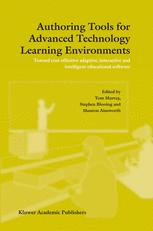

Most ebook files are in PDF format, so you can easily read them using various software such as Foxit Reader or directly on the Google Chrome browser.
Some ebook files are released by publishers in other formats such as .awz, .mobi, .epub, .fb2, etc. You may need to install specific software to read these formats on mobile/PC, such as Calibre.
Please read the tutorial at this link: https://ebookbell.com/faq
We offer FREE conversion to the popular formats you request; however, this may take some time. Therefore, right after payment, please email us, and we will try to provide the service as quickly as possible.
For some exceptional file formats or broken links (if any), please refrain from opening any disputes. Instead, email us first, and we will try to assist within a maximum of 6 hours.
EbookBell Team

4.4
42 reviewsResearchers and educational software developers have talked about building authoring tools for intelligent tutoring systems (ITSs), adaptive and knowled- based instructional systems, and other forms of advanced-technology learning environments (ATLEs) ever since these forms of educational software were introduced in the 1970s. The technical complexity and high development costs of these systems contrasts sharply with the common picture of education as a "home grown" activity performed by individual teachers and trainers who craft lessons tailored for each situation. There have been two primary reasons to create authoring tools for ATLEs: to reduce development cost, and to allow practicing educators to become more involved in their creation. The goal of creating usable authoring tools dovetails with the recent trend toward interoperability and reusability among these systems. We use the phrase "advanced-technology learning environment" to refer to educational software on the leading edge of practice and research. These systems go beyond traditional computer-based instruction or educational simulations by providing one or more of the following benefits: ß Providing rich, or even "immersive" interfaces so that students can "learn by doing" in realistic and meaningful contexts. ß Dynamically adapting the interface or content to the student's goals, skill level, or learning style. ß Providing expert hints, explanations, or problem solving guidance. ß Allowing "mixed-initiative" tutorial interactions, where students can ask questions and have more control over their learning.